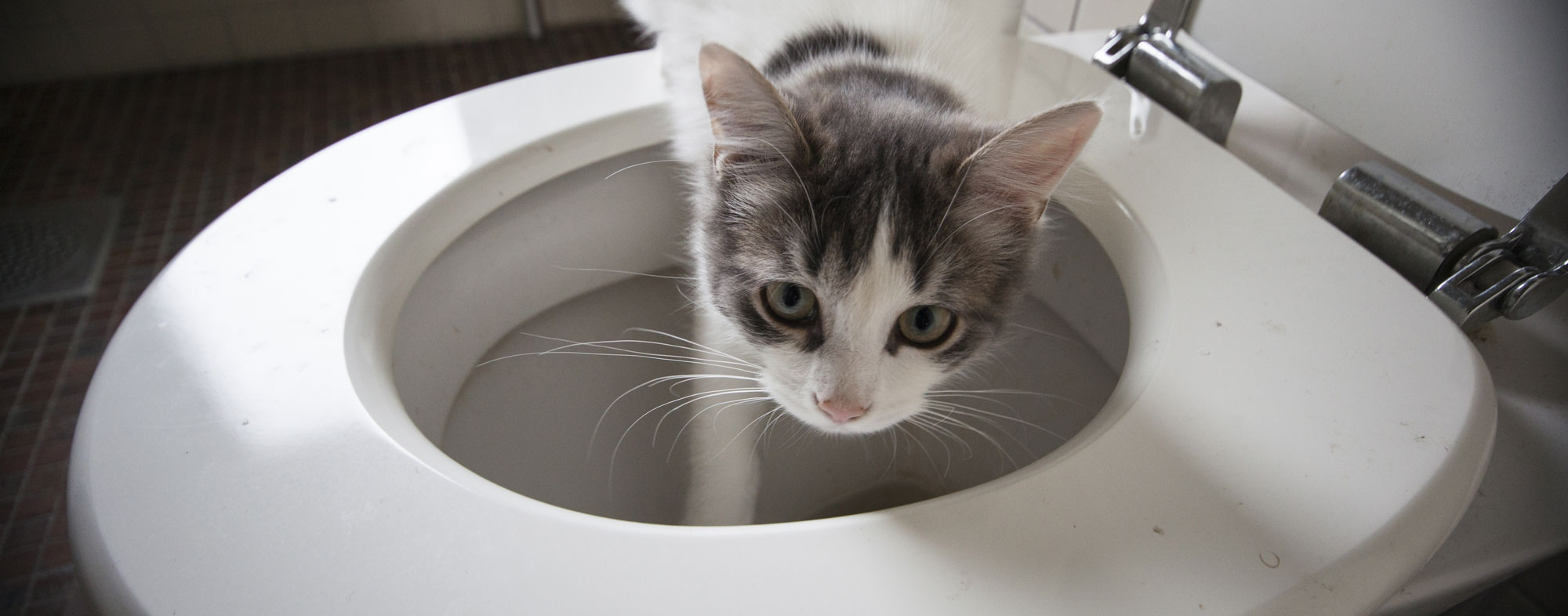Dangers of Disposing Cat Poop in Your Toilet - Precautionary Measures
Dangers of Disposing Cat Poop in Your Toilet - Precautionary Measures
Blog Article
How do you feel about Don’t flush cat feces down the toilet?

Introduction
As feline owners, it's important to bear in mind just how we take care of our feline close friends' waste. While it might appear hassle-free to purge cat poop down the bathroom, this method can have detrimental consequences for both the atmosphere and human health.
Alternatives to Flushing
Thankfully, there are more secure and extra liable ways to get rid of feline poop. Think about the adhering to choices:
1. Scoop and Dispose in Trash
The most typical method of throwing away pet cat poop is to scoop it right into a naturally degradable bag and toss it in the trash. Make certain to utilize a committed trash scoop and take care of the waste immediately.
2. Usage Biodegradable Litter
Go with biodegradable feline clutter made from products such as corn or wheat. These clutters are eco-friendly and can be securely disposed of in the garbage.
3. Bury in the Yard
If you have a backyard, consider hiding pet cat waste in a designated area far from vegetable yards and water sources. Be sure to dig deep enough to prevent contamination of groundwater.
4. Install a Pet Waste Disposal System
Purchase a pet dog waste disposal system specifically made for feline waste. These systems utilize enzymes to break down the waste, minimizing smell and environmental influence.
Health and wellness Risks
In addition to environmental problems, purging feline waste can also position health dangers to human beings. Feline feces may consist of Toxoplasma gondii, a parasite that can trigger toxoplasmosis-- a potentially serious health problem, especially for expectant ladies and individuals with weakened body immune systems.
Ecological Impact
Purging pet cat poop presents hazardous microorganisms and parasites right into the water supply, posing a significant danger to aquatic ecosystems. These contaminants can adversely impact aquatic life and concession water top quality.
Conclusion
Accountable animal ownership expands beyond supplying food and shelter-- it also involves correct waste monitoring. By avoiding purging feline poop down the bathroom and going with alternate disposal methods, we can lessen our environmental impact and shield human wellness.
Why Can’t I Flush Cat Poop?
It Spreads a Parasite
Cats are frequently infected with a parasite called toxoplasma gondii. The parasite causes an infection called toxoplasmosis. It is usually harmless to cats. The parasite only uses cat poop as a host for its eggs. Otherwise, the cat’s immune system usually keeps the infection at low enough levels to maintain its own health. But it does not stop the develop of eggs. These eggs are tiny and surprisingly tough. They may survive for a year before they begin to grow. But that’s the problem.
Our wastewater system is not designed to deal with toxoplasmosis eggs. Instead, most eggs will flush from your toilet into sewers and wastewater management plants. After the sewage is treated for many other harmful things in it, it is typically released into local rivers, lakes, or oceans. Here, the toxoplasmosis eggs can find new hosts, including starfish, crabs, otters, and many other wildlife. For many, this is a significant risk to their health. Toxoplasmosis can also end up infecting water sources that are important for agriculture, which means our deer, pigs, and sheep can get infected too.
Is There Risk to Humans?
There can be a risk to human life from flushing cat poop down the toilet. If you do so, the parasites from your cat’s poop can end up in shellfish, game animals, or livestock. If this meat is then served raw or undercooked, the people who eat it can get sick.
In fact, according to the CDC, 40 million people in the United States are infected with toxoplasma gondii. They get it from exposure to infected seafood, or from some kind of cat poop contamination, like drinking from a stream that is contaminated or touching anything that has come into contact with cat poop. That includes just cleaning a cat litter box.
Most people who get infected with these parasites will not develop any symptoms. However, for pregnant women or for those with compromised immune systems, the parasite can cause severe health problems.
How to Handle Cat Poop
The best way to handle cat poop is actually to clean the box more often. The eggs that the parasite sheds will not become active until one to five days after the cat poops. That means that if you clean daily, you’re much less likely to come into direct contact with infectious eggs.
That said, always dispose of cat poop in the garbage and not down the toilet. Wash your hands before and after you clean the litter box, and bring the bag of poop right outside to your garbage bins.
https://trenchlesssolutionsusa.com/why-cant-i-flush-cat-poop/
:max_bytes(150000):strip_icc()/0S1A1090-49a8e2c66f8e41d6901f2559787a7f24.jpg)
Do you really like reading up on Don’t flush cat feces down the toilet? Make feedback below. We'd be glad to see your feelings about this posting. In hopes to see you back again in the near future. In case you appreciated our page if you please make sure you remember to pass it around. We recognize the value of reading our article about How to Dispose of Cat Poop and Litter Without Plastic Bags.
Details Report this page